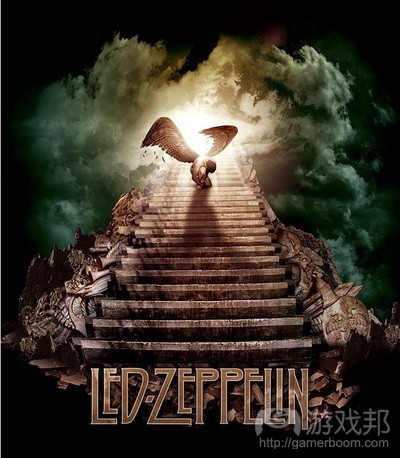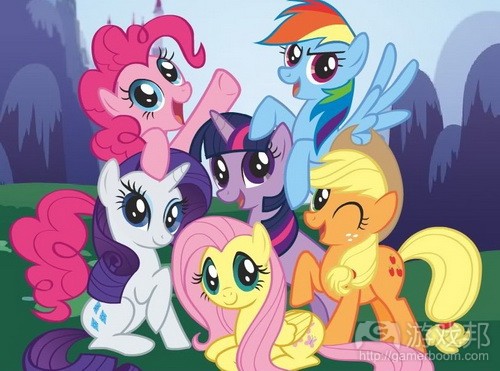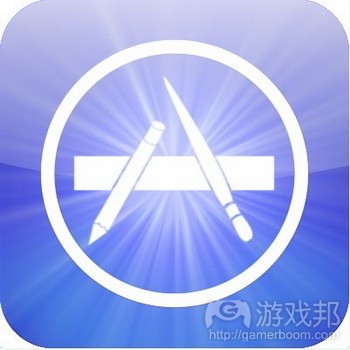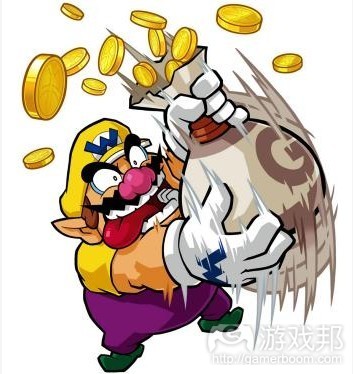分析主流游戏平台现状及理想应用商店的标准
作者:Lars Doucet
成为独立开发者的挑战之处在于,游戏的成功大多在你的掌控范围之外。你得自己发行,或和某第三方商店合作。无论如何,你依然需要完成很多营销工作——即便你搭载Steam之类的大型平台,也不一定就会成功。
也许某天,会有这样的在线商店会从天而降:允许所有人提交游戏,快速进行审核,将其呈现给众多用户,游戏成败取决于其本身的质量。兄弟手足不再残酷竞争,大小开发商均可和平共处,新精英管理时代向我们走来。
在这一神奇之日到来前,营销、网络和所有其他“商业”技能对于开发者成败的重要性和游戏质量相当。此外,独立“小团队”需要共进午餐,方能取得成功的观念会继续存在。
这一光辉时刻是否会到来?我不抱太大希望。对于想要从事游戏开发的人士,我的建议是,停止追求获得成功的通行证。不要等着依靠某人来完成你的梦想,或助你书写下个传奇故事——制作游戏,同全世界进行分享,学习商业知识,竭尽全力促使作品顺利运作。
但你知道吗?有梦想很棒。如果这一神奇商店真的出现,会是什么情况?给你个提示:已出现有些离你梦想不远的东西,你多半有接触过这些内容。
预期目标
首先谈谈我们追求什么。这一神奇商店需:
1. 准入门槛低
2. 给予资金奖励
3. 将开发者同庞大用户群联系起来
听起来很不错!但这些目标需要能够兼容。下面就来看看当前的行业情况。
Steam
Steam之类的监管商店有少量精选的高质量游戏,这些作品获得广泛特别关注及推广。这对开发者和用户来说都非常有益——用户获得杰出作品,合理价格,杰出服务,而开发者则收获众多愿意付费购买游戏的用户。
这里的弊端在于,大家都想要进入Steam,但其中已没有空间。虽然Steam会谨慎筛选众多的提交内容,将未被发现的杰出作品同众多《扫雷》克隆品中区分开来,但Steam依然没有足够空间容纳所有意图搭载这一平台的杰出作品。从很多方面来看,Steam和我们的神奇梦想商店非常接近,只是在此你只有微乎其微的入驻机会。
App Store
而除此之外,还有App Store之类的服务平台,App Store接受所有开发者的申请。不必惊讶,App Store存在大量游戏作品。更糟的是,苹果完全没有打算修复商店不良曝光渠道的意思。这促使开发者开始争相角逐“热门应用”榜单的位置,让用户自己在黑暗中摸索,错过许多自己喜欢的作品。
在众多问题中,商店深受“逐底竞赛”价格战的困扰。唯一可靠制胜渠道是,争取榜单靠前位置,在此“最多下载量”和“最畅销”之类的榜单最关键。除非游戏采用免费模式,否则将很难成为拥有“最多下载量”的作品,除非游戏售价99美分,否则它很难成为“最畅销”的作品。
设计促使开发者转投免费商业模式。免费模式非常不错,但问题在于,商店有意排除广泛的定价模式(游戏邦注:这在iPad平台有所好转,其支持不同价位的游戏)。
我们无法通过用户评级分类游戏,而且搜索功能也非常糟糕。苹果极度关注设计,因此我们完全有理由相信这些决策是有意为之。苹果将游戏看作商品,这促使开发者争相角逐曝光度,这反过来会压低价格,带给用户系列平价的一次性应用。苹果偶尔会挑选出新“推荐应用”,打造下个麻雀变凤凰的故事,带给下波开发者带来希望。
App Store远达不到我们的神奇理想商店目标——入驻商店很简单,但成功更多靠运气,而非价值,游戏设计选择会受苹果首选商业模式的限制。那些尽管面临如此多挑战依然最终取得成功的开发者通常有在App Store之外的区域开展营销活动。
不同方法
这里似乎存在若干权衡关系。Steam或Xbox Live Arcade之类受到严格监管的商店对用户或开发者来说都非常有益,但商店用户规模越大,开发者被接受的难度就越大。而App Store或Android Market之类的开放商店会接受所有开发者,但真正获取商店用户需要取决于开发者。
是否存在这样的商店:允许任何人提交游戏,不会让用户淹没在软件当中,或让开发者陷入无米之炊的境地?
我觉得存在这样的商店。
这就是Kongregate。
(注:《Defender’s Quest》首席设计师Anthony Pecorella也任职于Kongregate。当时他正在寻找一位程序员,后来他在Kongregate发现了一款我编写的热门游戏,于是我们开始合作。但我这篇文章可不是Kongregate的有偿广告。)
现在,就如我之前所说的,从天而降的神奇商店尚不存在。Kongregate离理想模式还有一定距离,但它起到模范作用。
什么是Kongregate?
Kongregate是互联网中的众多免费Flash游戏门户之一。Flash开发者制作游戏,然后通过这些门户将其推广给公众——其中比较大型的平台有Kongregate、Newgrounds和Armor Games。
许多门户都通过广告赚取收益,部分收益需要同开发者进行分享。有些门户网站支持融入虚拟交易的游戏,这让开发者得以销售虚拟商品(游戏邦注:这里需要给予门户网站小小分成)。开发者还可以通过赞助协议赚取收益,其中门户网站支付给开发者固定费用,以在游戏中植入公司商标——这是多数非虚拟交易开发者的创收方式(广告的收益微乎其微)。Kongregate提供最佳开发者支持——他们是首个共享广告收益的网站,他们有最好的微交易机制,他们的支持人员友善待人。
即便如此,这里我们看不到太多东西。Flash门户已存在很长一段时间,但多数开发者都没有从中获得丰厚收益。下面是Kongregate的独特之处。
曝光度
Kongregate能够轻松带来商业曝光度。如果你创造出Kong用户喜欢的作品,那么它就会取得成功,因为喜欢游戏的玩家会在游戏上传后就立即发现它。这在App Store就不是如此——其中存在许多用户喜欢但最终未被发现的iOS游戏。
Kongregate的突出曝光度由简单而强大的用户评级系统、杰出搜索功能、丰富分类及便于导航的网站构成。和应用商店不同,这里的用户评级是游戏分类和呈现的主要方式。这些评级直接来自于玩家,他们只能够投票一次,但可以随时改变自己的投票决定。通过将曝光度同“玩家多喜欢这款游戏”,而非任何其他参数绑定,Kongregate让游戏能够依靠自己的质量胜出。
这令许多未被发现的杰出作品开始浮出水面(游戏邦注:这通常会被其他监管平台排除在外)。一个典型例子就是《购物车英雄》,这款游戏只能说是“令人厌恶”,但其获得忠实粉丝基础,单在Kongregate就有500万玩家。
(应该说,Newgrounds最先创造出杰出的曝光引擎。Kongregate基于这一构思,将其集中运用至游戏中。)
筛除糟糕内容
由于Kongregate几乎接受所有内容,许多糟糕内容会被上传至该平台。这包含完全不能运行的游戏,抄袭游戏及包含情色信息的内容。尤其糟糕的内容会首先被网站管理者筛除出来,而没有妨碍服务的游戏将被归类到低曝光度类别中。这些内容在“审判阶段”将被抽离主流网站,直到他们在最初评分中获得足够的用户评级。这样,Kongregate本身就会对提交内容做出些许价值判断。
截止本文撰稿,Kongregate有“5万7941款免费游戏!”其中约有1%评分超过4.0颗星,只有14%评分超过3.0颗星。所有出现在首页的游戏都属于这些高评分作品,网站通过每周及每月更新高评级作品保持内容的新鲜性。
这个过程最重要的部分在于,这并非随机性。这里无疑涉及主观偏好,但这并不意味着“优秀”游戏就不会被忽略——只是说用户本身是最终的优劣裁决者,而非源自平台设计的意外情况,或是由监管者个人挑选成败作品。
也就是说,Kongregate给予优秀作品特别关注,在首页进行推荐,给予其供玩家赚取的“徽章”(当游戏获得徽章时,它就会被许多玩家环绕)。但和Steam或iOS平台的“推荐”游戏不同,这些选择存在一定的客观性——推荐游戏需要满足最低限度的评级分数,通常在最新作品中,能够被Kongregate列为排名前3或前4的内容少之又少。
最后,Kongregate开始尝试Netflix风格的推荐引擎,这里它运用你的评级信息向你呈现其他你可能会喜欢的作品,抵消全球用户评级的总体喜好偏见。
收益
Kongregate有庞大的用户基础,其向用户提供优质服务,还有个一流的曝光机制。你还要求什么?
Kongregate之所以无法变成主导商店的一个原因是,它并非一个商店。
多数游戏都采用免费模式,它们最近才开始尝试虚拟交易内容。此外,他们的焦点是基于浏览器的游戏,而非可下载游戏或独立应用。但这些内容不再仅仅局限于Flash游戏,如今他们开始支持Unity、Java和HTML5技术。
Kongregate表现最突出之处是免费flash MMO游戏,例如《螺旋骑士》和《狂神国度》。Steam的传统模式(馈赠免费演示内容,旨在出售付费游戏)目前只被运用至少数Kongregate游戏中。典型例子包括我们自己的作品《Defender’s Quest》以及热门策略游戏《爬行世界》。虽然《Defender’s Quest》在这一模式中表现突出,但我们在评论分数上遭受打击,因为许多玩家无法接受这只是个演示内容的事实。而《爬行世界》则积极推进销售量,避免任何冲击其商业模式的情况。
就如上述例子所示,这一平台存在潜力,无论你的商业模式是传统形式还是免费形式。Kongregate母公司GameStop还有个更传统的数字推广平台Impulse,我觉得这里存在些许潜在协同作用。
总结
我所谓的神奇精英游戏商店还没出现,这也许永远无法实现,但我觉得还是有一定的希望。
当前的商店都有其利弊——Steam非常不错,但很难进入;iOS很开放,但过于拥挤和随意。Kongregate最接近这一目标,平台面向所有开发者,仔细筛选内容,将玩家引导至他们喜欢的作品。唯一缺陷是,它不是真正的商店。
没人知道Kongregate会怎么做——我不知道这一商业举措是否有利于他们。此外,其他人也可能创建出神奇的理想商店,借鉴Kongregate的模式,就像Kongregate利用Newgrounds模式一样。
有若干Steam之外的“独立”选择(游戏邦注:例如,Indievania)开始朝此方向迈进,但步伐依然很小。Kongregate的主要优势在于,它已有庞大的用户基础。
但无论谁最终真的实现这一目标,蓝图轮廓已经确定。我们还需要完成很多工作,但我不再觉得这缺乏可能性。相信总有一天有人会打造一个让优秀作品能够胜出的在线游戏商店。(本文为游戏邦/gamerboom.com编译,拒绝任何不保留版权的转载,如需转载请联系:游戏邦)
The Holy Grail of Digital Distribution
by Lars Doucet
The challenge of being an independent developer is that so much of your game’s success is out of your control. There’s no Department of Internet Money where you can present your neatly wrapped Cool New Thing and be justly rewarded with crisp thousand-dollar bills.
Instead, you can either self-publish or work with one of the many third party stores. Either way, you’re still going to have to do a lot of marketing work yourself – and even if you get onto a major platform like Steam, success isn’t guaranteed.
Perhaps one glorious day, an online store will descend from the Heavens that lets anyone submit a game, immediately approves it, presents it to an enormous audience, and lets the game succeed or fail on its merits alone. Brother will no longer fight against and brother, the lion will lay down with the lamb, and a bright new age of meritocracy will shine down upon us all. Also chocolate ponies. Amen.
Until that magical day comes (if it ever does), marketing, networking and all those other “businessy” skills will be just as important to a developer’s success as the quality of her game. Furthermore, the perception that you have to sit at the same lunch table as the Indie “in-crowd” to succeed will persist (regardless of whether that perception is true).
Will this glorious day ever arrive? I wouldn’t count on it. My advice to any would-be developers is to stop asking for permission to succeed. Don’t wait for someone to come along and fulfill your dreams or make you the next Cinderella stories – make games, share them with the world, learn some business stuff, and do your best to make it work.
But you know what? It’s nice to dream. What if this magical store really is possible after all? I’ll give you a hint: there’s already something out there that’s not too far from the dream, and chances are you’ve already used it.
What We Want
First, let’s talk about what we’re looking for. This magical dream store must:
1. Have a low barrier to entry
2. Reward merit with financial success
3. Connect developers to a large audience
Sounds great! However, these goals might not be compatible. Let’s look at today’s landscape.
Steam
Curated stores like Steam have a small number of hand-picked, high quality titles that are lavished with individual attention and promotion. This is beneficial for both developer and customer – customers get great games, affordable prices, and excellent service, while developers get a huge audience both ready and willing to pay for their games.
The downside, of course, is that everyone wants to get onto Steam and there’s simply not room for them all. Even if Steam could reliably sift through their mountain of submissions, separating the undiscovered gems from the thousands of Minesweeper clones, there still wouldn’t be room for all the great games that want to get in. Steam is pretty close to our magic dream store in many aspects, except for the fact that you have a snowball’s chance in hell of actually getting on there.
The App Store
On the other end of the spectrum, you have services like the App Store, which accept just about anyone who applies. Not surprisingly, the App Store is flooded with games. Even worse, Apple shows no interest in fixing the store’s fundamentally broken discovery channels. This forces developers to compete for slots on the “top app” charts, and leaves customers poking around in the dark, passing over countless games they would have loved.
Among other problems, the store is plagued by “race to the bottom” pricing. The only reliable path to success is to get on the charts, the most important of which are “most downloaded” and “most sold.” Your game can’t be “most downloaded” unless it’s free, and your game can’t be “most sold” unless it’s 99 cents. (Apparently there actually is a “highest grossing” chart, at least on iTunes. My mistake)
This design pushes developers towards the free-to-play business model. Free-to-play is fine and good, but it stinks that the store intentionally excludes a wider range of pricing models (The situation is somewhat better on the iPad, which can actually support games at various different price points).
There’s also no way to sort the games by user rating, and search functionality is awful. Given Apple’s obsessive attention to design, there’s every reason to believe these decisions are intentional. Apple treats games like commodities, which drives developers to compete for visibility, which in turn drives down prices, which provides customers with a pile of affordable, disposable apps. Every once in a while, Apple hand-picks a new “featured App” to be the next Cinderella Story, keeping hope alive for the next wave of developers.
The App Store falls far short of our magical ideal – it’s easy to get onto the store, but success has a lot more to do with chance than merit, and game design choices are limited by Apple’s preferred business models. Those that succeed despite these challenges usually have a focused marketing effort outside of the App Store itself.
A Different Way
It seems like there’s some fundamental trade-offs at work here. A strongly curated store like Steam or Xbox Live Arcade can be good for both customers or developers, but the bigger the store’s audience, the harder it is to get accepted. On the other hand, open stores like the App Store or Android Market will take just about anybody, but it’s up to the developer (or the winds of fate) to actually reach that store’s audience.
Couldn’t there be some store that lets pretty much anyone submit a game, without drowning customers in a river of shovelware, or leaving developers up a creek without a paddle?
I think there is.
It’s called Kongregate.
Full disclosure: The lead designer of Defender’s Quest, Anthony Pecorella, also works for Kongregate. We started working together when he was looking for a programmer, and found a popular game on Kong that I had written. And no, they didn’t pay me to write this.
Now, as I said before, the magical store from the heavens doesn’t exist yet. Kongregate falls a bit short of the ideal, but it’s leading the way.
What is Kongregate?
Kongregate is one of many free flash game portals on the internet. Flash developers (like me) make games, and then distribute them to the public through these portals – the biggest ones being Kongregate, Newgrounds, and Armor Games.
Most portals run ads to make money, some of which they share with developers. A few portals support games with microtransactions, which lets developers sell virtual goods with a small cut going to the portal. Developers can also make money from sponsorship deals, where a portal pays a flat fee to brand a game with their logo – this is where most non-microtransaction developers make their money (advertisement amounts to peanuts). Kongregate has the best developer support in the business – they were the first site that I know of to share ad revenue, they have the best microtransaction system, and their support staff is both friendly and helpful.
Even so, there’s not much to see here. Flash portals have been around a long time and most of the scene’s developers aren’t rolling in dough. Here’s what makes Kongregate different.
Discovery
Kongregate has, hands down, some of the best discovery in the business. If you create a game that Kong’s audience will enjoy, it will succeed, because the players that love it will find it almost as soon as it’s uploaded. This is not the case on the App Store – there are lots of iOS games that the audience would love, but will never find.
Kongregate’s excellent discovery consists of a simple and powerful user rating system, excellent search functionality, lots of categories, and an easy-to-navigate website. In stark contrast to the app store, the user rating is the primary way in which games are sorted and displayed to the player. These ratings come directly from players, who can only vote once each, but can change their vote at any time. By tying visibility chiefly to “how much players like this game” rather than any other metric, Kongregate gives each game the best possible chance of succeeding on its own merits.
This makes many undiscovered gems rise to the surface that any curated platform would dismiss. A good example is Shopping Cart Hero, which can only be described as “ugly as sin,” but has nevertheless earned a loyal fan base and over five million plays on Kongregate alone.
(To be perfectly fair, Newgrounds created an excellent discovery engine first. Kongregate built on the idea and laser-focused it on games.)
Sifting out the Crap
Since Kongregate will accept pretty much anything, a whole lot of crap gets uploaded to the system. This includes outright broken games, plagiarized games, and semi-interactive slideshows of pornography or disturbing images. The worst of these are pre-screened by site admins, and anything that doesn’t violate the terms of service goes into a holding pen with minor visibility. These games are held off of the main site while they are “under judgment” until they get enough user ratings for an initial score. In this way, Kongregate itself imposes as little value judgment on submissions as possible.
As of this writing, Kongregate boasts “57,941 free games!” About 1% of those have a score greater than 4.0 stars, and only 14% have a score above 3.0. All of the games on the front page are among these high-scorers, and the site keeps things fresh by with weekly and monthly categories for top-rated new material.
The most important part of this procedure is that it is not arbitrary. Subjective taste is still involved, to be sure, and it doesn’t mean some “good” game won’t get passed over – it just means that the audience itself is the final arbiter of what’s good or bad, not an accident of the platform’s design, or the whim of a curator individually picking the winners and losers.
That said, Kongregate does give personal, curated attention to select titles by featuring them on the front page, and giving them “badges” for players to earn (when a game gets badges, it’s swarmed with players). Unlike the “featured” games on Steam or iOS, however, there’s a degree of objectivity to these selections – featured games must meet a minimum rating score to qualify, and there’s usually few enough of these that Kongregate can just pick the top three or four out of the latest batch of games.
Finally, Kongregate has started experimenting with a Netflix-style recommendation engine, where it uses your rating information to show you other games you might like, offsetting the mass-appeal bias of the global user rating.
Money
Kongregate has a huge audience, provides a great service to their players, and a top-notch discovery system. What more could you want?
Well, the one thing holding Kongregate back from being the store to end all stores is that… it isn’t a store
Most of the games are free, and they’ve only recently begun experimenting with microtransactions. Furthermore, their focus is browser-based games, rather than downloadable titles or stand-alone apps. They have, however, expanded well beyond flash games, and now support Unity, Java, and HTML5.
Kongregate has been particularly successful with free-to-play flash MMO’s, such as Spiral Knights and Realm of the Mad God. The more traditional format that we see on Steam, giving away a free demo to sell a premium game – has only been used in a few Kongregate games so far. Successful examples include our own game, Defender’s Quest, as well as the strategy fan-favorite Creeper World. While Defender’s Quest did well with this model, we took a hit to our review score because some players didn’t like the fact that it was a demo. Creeper World, on the other hand, managed to drives sales and avoid any backlash to their business model.
As these experiences attest, there’s potential here, regardless of whether your business model is traditional or free-to-play. Given that Kongregate’s parent company, GameStop, also owns the more traditional digital distribution platform Impulse (a Steam Competitor), I can see some potential synergy.
Summing Up
My magical meritocratic game store hasn’t arrived yet, and it might not ever, but I think there’s hope.
Today’s stores each have their pros and cons – Steam is awesome but inaccessible, whereas iOS is open, but crowded and arbitrary. Kongregate comes the closest by accepting everyone, and then dutifully sorting the wheat from the chaff and directing players to the games they’ll love. The only missing piece – and it’s a big piece – is turning it into an actual store.
Who knows what Kongregate will do – I have no idea if this business move would actually be good for them (although it would certainly be good for me!). Furthermore, there’s no reason someone else couldn’t build the magic dream store, building on Kongregate’s model just as Kongregate built on Newgrounds’.
There are a few “indie” alternatives to Steam like Indievania that are taking steps in this direction, but are still relatively small. Kongregate’s main advantage is that it already has a huge audience.
Regardless of who actually does it, however, the outlines of the blueprint have been drawn. There’s still a lot of work to be done, but I don’t think the dream is impossible anymore. Someday, someone might make an online game store that lets anyone succeed if their game is good enough.
A man can dream, right?(Source:gamasutra)
上一篇:解析游戏设计文件应包含的基本内容














































 闽公网安备35020302001549号
闽公网安备35020302001549号